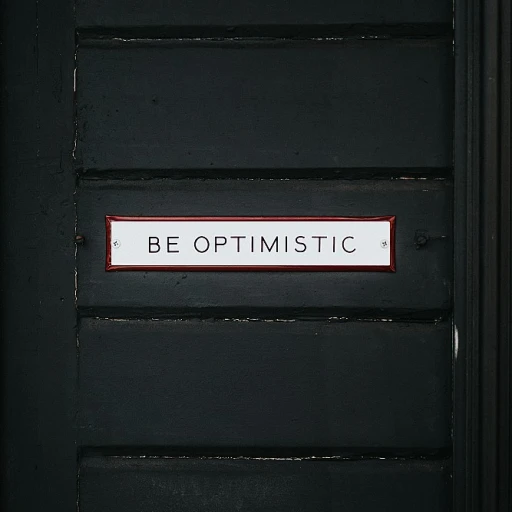
The Concept of Care Pulse
Unraveling the Concept of Caring Dynamics
Understanding the rhythm of a care pulse is fundamental to enhancing work-life balance. At its core, the care pulse involves the ongoing interactions and dynamics between individuals in the workplace, encapsulating a holistic approach to health and wellness. With the increasing demands faced by care providers and professionals, recognizing this pulse becomes essential. These interactions are like popupelement style moments that reveal insights into how centering care around the needs of clients can foster a balanced environment. The idea of a care pulse is deeply rooted in a client-centered approach. It's about seeing the big picture and understanding how each function, be it in a senior living facility, acute care unit, or long-term care environment, contributes to the overall rhythm of care delivery. Each pulse reflects the broader insights gained from an interactive training style that emphasizes learning and development for both clients and caregivers. The identification of one's personal care rhythm also draws parallels with the activated insights gained from deeper emotional understanding. Recognizing the emotional well-being of those in post-acute or customer service sectors can significantly impact their care pulse. This is further supported by instructor-led training and experience management that equips caregivers with the tools to maintain an overlayelement style of nurturing care. Integrating emotional well-being within the pulse of care facilitates a healthier work environment. It enhances document createelement tasks and encourages a log referrer approach to problem-solving—an essential aspect of balancing work and personal life. For more insights on the role of emotional understanding in achieving balance, visit Understanding the Role of Emotion Wheels in Work-Life Balance. In conclusion, recognizing and nurturing your own care pulse is a journey toward achieving a harmonious work-life balance. It's a continuous interplay of insights, experience, and centered care dynamics, all working cohesively in the backdrop of a well-structured emotional and mental health foundation.Identifying Your Personal Care Pulse
Discover Your Unique Rhythm
Understanding your personal care pulse is essential for striking the right balance between work and personal life. Identifying your unique rhythm requires a balance of reflective insights and practical observations. Recognizing the moments when you feel most energetic and when you're due for rejuvenation lends itself not only to improved productivity but also emotional satisfaction. To discover your care pulse, consider documenting your daily activities and feelings. This approach allows you to notice patterns and pinpoint when your pulse – be it faster or steadier – can accommodate tasks that require varying levels of concentration, creativity, or care. This method becomes a valuable function of your personal growth and development.Engage in a Structured Approach
Engaging with a mix of structured and dynamic methods can help maintain a consistent pulse. Overlayelement styles like instructor-led courses provide grounded, practical training techniques that are pivotal for those balancing demanding roles, such as caregivers or senior living professionals. This mix of self-guided reflection and structured learning aids in the continuous development of your care pulse. Explore courses tailored to enhancing customer service skills or building senior client relationships to see how these practices resonate with your natural rhythms. Such instructor-led programs adhere to a client-centered care approach, a crucial element for those navigating the complex landscape of health care and acute care environments.Activated Insights for Continuous Improvement
Utilizing insights gathered from experience management, you can develop a more refined sense of your care pulse. Leverage technology to keep track of personal insights. Tools that offer features like console log functions or log referrer details can help you better understand your work-life interactions. This data could serve as a reflective overlayelement, providing a clear picture of when your work passion is activated and when to ease off to focus on personal endeavors. In conclusion, identifying your personal care pulse is a journey of discovery that encourages a balance between intuition and data-backed insights. It's about synthesizing learnings from both your energetic peaks and needed pauses to cultivate vibrant professional and personal experiences.Balancing Work and Personal Life
Synchronizing Work with Personal Priorities
Finding the right balance between work and personal life can feel like a tightrope walk, where a slight misstep might throw your routine off. With the dynamic nature of work obligations and personal commitments, developing a style that incorporates flexibility is crucial for maintaining a harmonious care pulse. This integration is about aligning one's responsibilities at work with personal priorities using activated insights derived from understanding one's pace and preferences. Balancing work and personal life requires conscious effort and awareness. Care professionals and caregivers can benefit significantly from adopting a client-centered approach, akin to the strategies employed in senior living and post-acute care settings. This method emphasizes the importance of fulfilling both professional duties and personal needs through thoughtful planning and prioritization.- Identify key activities during your workday that allow you to thrive. This might involve actively engaging with clients, managing acute care situations, or development and training sessions with your team.
- Incorporate wellness practices into your routine, allowing space for mental and emotional well-being. Methods such as mindfulness or wellness-centered activities can enhance your pulse by offering respite from the demands of a busy schedule. For tips on integrating wellness into your daily life, consider these enhance your week with these wellness Wednesday tips.
- Harness tools like document createelement or style display to efficiently manage tasks, paving the way for seamless transitions between work and leisure time.
- Engage in reflective practice by logging your daily activities and assessing which align with your personal care pulse. This process, akin to experience management in client-centered services, can provide insights into rebalancing efforts as necessary.
Emotional Well-being in the Workplace
Enhancing Emotional Well-being at Work
A well-rounded approach to work-life balance extends beyond time management, delving into the emotional aspect of our professional lives. To foster emotional well-being at work, it is crucial to consider the concept of care pulse—a rhythm that encapsulates how we manage our emotional energies in the workplace. By tuning into this pulse, professionals can enhance emotional resilience and ensure a healthier work environment.
Emotional well-being involves understanding and modulating our emotional states, which significantly impact daily work experiences. With regular training and the application of insights gathered from mindfulness and emotional intelligence developments, professionals can activate their emotional pulse intentionally. For example, care providers in senior living and acute care settings often navigate emotionally charged environments. Their ability to maintain emotional equilibrium not only aids in sustaining their well-being but also influences client-centered care outcomes.
An essential part of nurturing emotional well-being is fostering an experience management approach that integrates supportive overlayelement styles. These structures support individuals in developing their emotional intelligence, contributing to healthier interactions with both colleagues and clients. Insights activated from these engagements underscore the importance of client-centered and caregiver-focused practices.
Creating a culture that prioritizes emotional well-being starts with leadership and permeates through training programs. Instructor-led courses are valuable tools for empowering employees, providing them with the skills to recognize and adapt their emotional rhythms effectively. When employees feel emotionally supported, it fosters a robust document of workforce health, boosting productivity and decreasing turnover rates.
In the workplace, emotional well-being is not solely activated by personal development; it is a collective endeavor. Organizations must create environments that support emotional health, where style displays and referrer logs consistently remind individuals of their care pulse and its importance in the professional setting.
Mental Health and Its Role in Care Pulse
Exploring Mental Health's Connection to Your Care Pulse
Understanding mental health's role in maintaining a balanced care pulse is crucial for both personal and professional growth. Mental health, often overlooked in the hustle of daily life, is a cornerstone for achieving a sustainable work-life balance. It influences how we handle stress, relate to others, and make choices. Recognizing its importance can transform your approach to work and personal life.
Care professionals and caregivers, especially those in senior living and long-term care settings, often face unique challenges. Their experience management is vital in maintaining their own mental health while providing client-centered care. Training and development programs can offer insights into managing stress and avoiding burnout, ensuring that care providers remain effective and compassionate.
Insights and Strategies for Mental Health
- Activated Insights: Regularly assess your mental health through self-reflection and professional guidance. This helps in identifying areas that need attention and ensures your care pulse remains steady.
- Instructor-Led Training: Engage in courses that focus on mental health awareness and stress management. These can be invaluable for both personal development and enhancing your caregiving skills.
- Experience Sharing: Create a support network with peers and colleagues. Sharing experiences can provide comfort and practical solutions to common challenges.
For those working in acute care or post-acute settings, maintaining a healthy mental state is even more critical. The fast-paced environment requires a well-regulated care pulse to deliver effective and empathetic care. By integrating mental health strategies into your daily routine, you can ensure that your care pulse remains balanced and effective.
Ultimately, mental health is not just a personal matter; it impacts your professional life and your ability to provide centered care. By prioritizing mental health, you activate a more resilient care pulse, benefiting both you and your clients.












